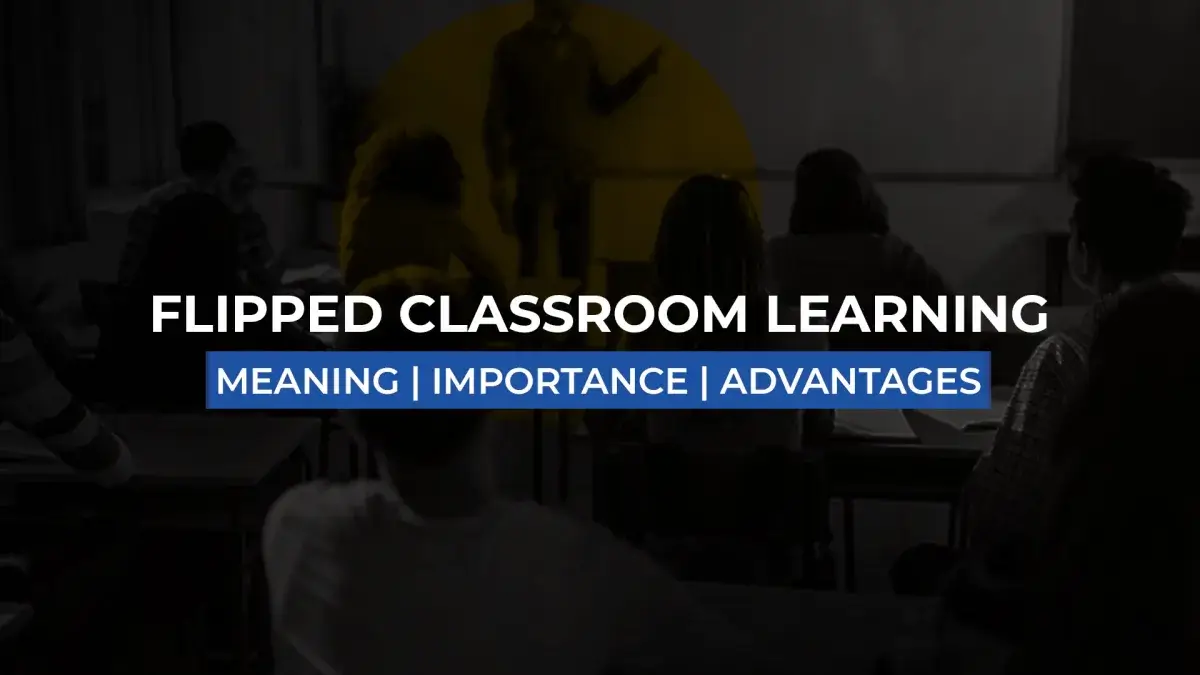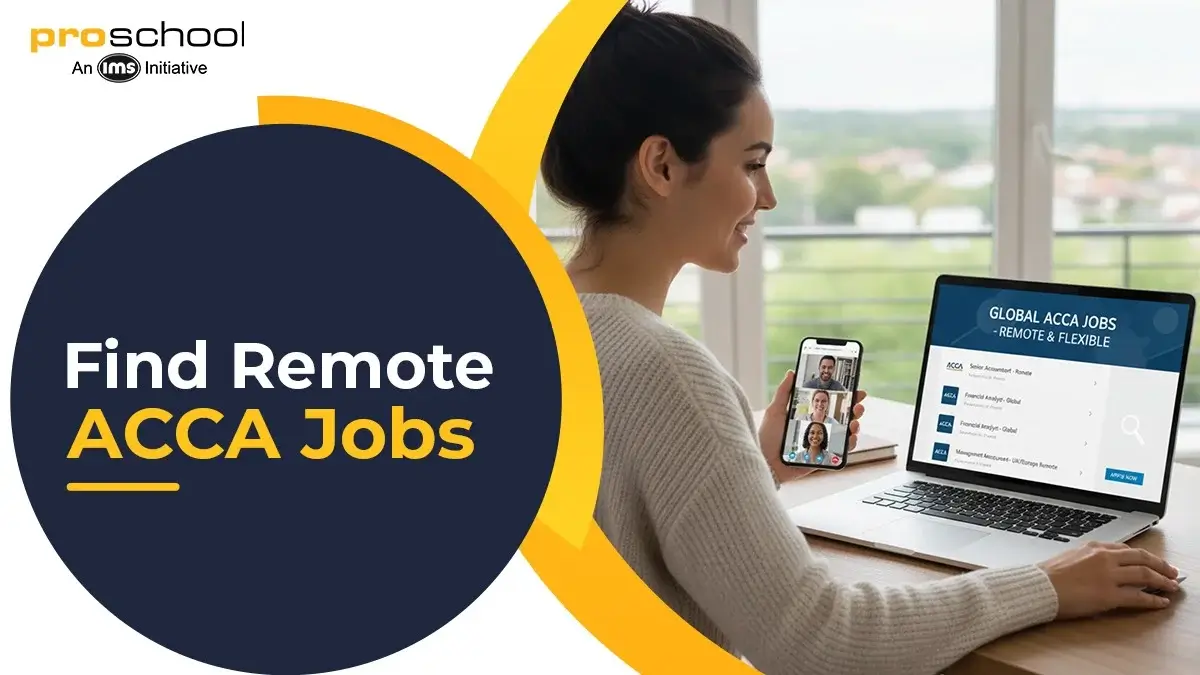Flipped Classroom Learning – Meaning, Importance & Advantages

Here's What We've Covered!
Welcome to the world of flipped classroom learning, where education becomes an exciting journey of discovery and active participation. Get ready to flip the switch and embark on a transformative learning experience like never before!
Dear fellow learners! Are you tired of the traditional classroom setup where the teacher stands at the front, delivering lectures while you passively soak in information? Well, get ready to flip the script on conventional education because today we’re diving into the exciting world of flipped classroom learning!
In this blog, we’re going to explore what a flipped classroom is, why it’s so important in modern education, and the amazing advantages it offers to both students and teachers. So, grab your favorite drink, find a comfy spot, and let’s embark on this enlightening journey together!
But before we start, let’s sit back and imagine a scenario like this: rows of desks, a teacher at the front, delivering lectures, students diligently taking notes, and then heading home to complete assignments. It’s the classic setup we’re all familiar with, but have you ever stopped to wonder if there’s more to education than this traditional approach?
Well, buckle up, because we’re about to explore the need for innovative approaches to education that can revolutionize the way we learn and engage with knowledge!
But before we do that, let’s understand more about the traditional classroom model and how it has impacted the students and why is there a need to innovate and move ahead in today’s time:
The Traditional Classroom Model:
Ah, the traditional classroom model is a tried and tested method that has served as the foundation of education for generations. It has undoubtedly played a crucial role in imparting knowledge, fostering discipline, and building the foundation of academic skills. However, this model often places the teacher at the center of the learning process, with students playing a more passive role as recipients of information.
In this setup, students are expected to absorb knowledge through lectures, memorize facts, and demonstrate their understanding through exams and assessments. While this approach may have its merits, it can sometimes leave students feeling disengaged, overwhelmed, and disconnected from the material. The one-size-fits-all structure may not cater to individual learning styles, interests, or pace of learning.
And that’s why the Need for Innovative Approaches have arisen with time!
Now, imagine a learning environment that sparks curiosity, fosters critical thinking, and promotes active engagement. Innovative approaches to education seek to break free from the confines of the traditional classroom model and adapt to the evolving needs of students in the modern world.
Why do we need these approaches? Well, let’s consider the shifting landscape of the 21st century. We live in a digital age, where information is readily available at our fingertips. We’re surrounded by rapidly advancing technologies, diverse cultures, and interconnected global communities. To thrive in this dynamic world, we need educational approaches that nurture creativity, adaptability, problem-solving skills, and collaborative abilities and all this is not possible only through the traditional approach of classroom teaching.
Engaging and Interactive Learning:
Innovative approaches to education prioritize engaging and interactive learning experiences. They encourage students to actively participate in their own learning journey, fostering a sense of ownership and empowerment. Instead of solely relying on lectures, these approaches embrace a variety of teaching methods that cater to different learning styles.
Think project-based learning, where students tackle real-world problems, conduct research, and collaborate with peers to find solutions. Imagine flipped classrooms, where students access lectures or course materials online outside of class, allowing in-person time for discussions, experiments, and hands-on activities.
Personalized Learning:
Another key aspect of innovative approaches to education is personalized learning. Recognizing that each student has unique strengths, weaknesses, and interests, these approaches aim to tailor education to individual needs. Adaptive learning technologies, individualized lesson plans, and differentiated instruction help students progress at their own pace, ensuring they receive the support and challenges they require to thrive.
Preparing for the Future:
Innovative approaches to education have a broader goal in mind: preparing students for the future. The future is uncertain, constantly evolving, and demanding new skills. By integrating critical thinking, problem-solving, creativity, collaboration, and adaptability into the educational experience, these approaches equip students with the tools they need to navigate the challenges and seize the opportunities that lie ahead.
Now that you know the need for innovative approached in teaching and learning, let’s explore Filliped Classroom as one of the techniques of innovative approach to education.
What is a Flipped Classroom?
Well, imagine a classroom where the roles of in-class lectures and homework assignments are completely reversed. In the traditional model, teachers deliver lectures during class time, and students tackle assignments and practice exercises at home. But in the flipped classroom, this dynamic flips around like a gymnast on a trampoline!
In a flipped classroom, students are introduced to the learning material before they even step foot in the classroom. This pre-class preparation could take the form of watching instructional videos, reading relevant materials, or engaging with interactive online modules. They get to explore the concepts at their own pace, pause, rewind, and truly absorb the content.
Now, here comes the exciting part—when students enter the classroom, it transforms into a hub of active learning. Rather than passively listening to lectures, students engage in dynamic discussions, collaborative projects, and hands-on activities. The teacher takes on the role of a facilitator, guiding and supporting students as they apply what they’ve learned and delve deeper into the subject matter.
The flipped classroom model revolves around two key principles: pre-class preparation and in-class active learning. The pre-class preparation empowers students to acquire foundational knowledge on their own, allowing them to come to class equipped with a solid understanding of the material. This prepares them for the second part—the in-class active learning experience, where they apply, analyze, and synthesize what they’ve learned.
By flipping the traditional roles, the flipped classroom model addresses the limitations of passive learning and fosters a more engaging and interactive educational experience. It encourages critical thinking, problem-solving, and collaboration—the skills needed to thrive in the real world.
Imagine the possibilities! Students can dive deeper into complex topics with their peers, seek guidance from the teacher when they face challenges, and engage in exciting discussions that broaden their perspectives. The classroom becomes a vibrant hub of knowledge exchange and exploration.
So, there you have it—the flipped classroom model turns the traditional teaching methods on their heads. It empowers students to take charge of their learning outside the classroom, while transforming class time into a dynamic space for active engagement and deeper understanding.
Now that we’ve scratched the surface of this innovative approach, get ready to delve deeper into the practical implementation and benefits of the flipped classroom model. So, stay tuned and get ready to flip your learning experience in the most extraordinary way!
Flipped Classroom Examples:
To give you a clearer picture, let’s delve into a couple of examples that highlight the essence of a flipped classroom:
- Pre-Class Videos: Imagine you’re studying physics, and before each class, your teacher shares a short video explaining the fundamental principles and concepts. You watch the video at your own pace, taking notes and grasping the basics. In the subsequent class, you and your classmates engage in hands-on experiments, discussions, and application exercises, building upon the foundation laid in the video.
- Interactive Online Modules: Let’s say you’re learning a new language. Instead of spending class time listening to the teacher go through grammar rules, vocabulary, and sentence structures, you access an interactive online module that presents the material in an engaging and interactive manner. In class, you practice conversational skills with your peers, seek clarification, and receive personalized guidance from the teacher.
Now that we have a grasp on what a flipped classroom entails, let’s explore why it’s becoming increasingly important in the realm of education and the advantages it brings:
The Importance and Advantages of Flipped Classroom Learning:
- Personalized Learning: The flipped classroom model allows students to learn at their own pace and revisit concepts as needed. Each student can tailor their learning journey to their individual needs and preferences, ensuring a more personalized and effective learning experience.
- Active Engagement: By moving traditional lectures outside of class, students come to class prepared and ready to actively participate in collaborative activities, discussions, and problem-solving exercises. This active engagement fosters deeper understanding, critical thinking, and the development of essential skills.
- Individualized Support: With more class time available for interaction, teachers have the opportunity to provide individualized support, guidance, and feedback to students. They can address specific areas of difficulty, nurture strengths, and create a supportive and enriching learning environment.
- Enhanced Collaboration: The flipped classroom nurtures a collaborative spirit among students. Through group projects, peer-to-peer learning, and interactive activities, students develop teamwork skills, learn from each other’s perspectives, and strengthen their communication abilities.
So, there you have it! The flipped classroom approach is revolutionizing education, empowering students to take charge of their learning and transforming teachers into facilitators of knowledge and growth. In the meantime, embrace the concept of flipping the classroom and embrace the exciting possibilities it holds.
Also Read – IMS Proschool Reviews and Testimonies Reveal a Happy Reality
Conclusion:
We’ve reached the end of our journey exploring the exciting world of flipped classroom learning. Let’s take a moment to reflect on what we’ve discovered and why this innovative approach is worth embracing.
Throughout this blog, we’ve seen how the flipped classroom model brings a breath of fresh air to traditional teaching methods. It sparks curiosity, fosters critical thinking, and promotes active engagement among students. By flipping the script, it transforms classrooms into vibrant hubs of knowledge exchange and exploration.
Now, as we conclude our journey, I want to leave you with an exciting opportunity. If you’re intrigued by the flipped classroom model and want to delve deeper into this transformative approach while pursuing your professional courses for a brighter career, I encourage you to explore IMS Proschool courses. They are dedicated to teaching all their professional courses for students and well as working professionals with flipped classroom techniques and can provide you with invaluable knowledge and hands-on experience.
By pursuing ProSchool courses, you’ll have the chance to experience the power of flipped classroom learning firsthand. You’ll learn from expert instructors who have mastered this innovative approach and gain practical insights that can elevate your skills and career journey to next level in just few months.
So, why wait? Take the leap and embrace the benefits of flipped classroom learning. Unlock your potential, ignite your curiosity, and embark on an educational adventure like no other. ProSchool is ready to guide you every step of the way.
And always remember, education is a lifelong journey, and embracing innovative approaches like the flipped classroom model can unlock a world of possibilities. So, flip your perspective, flip your classroom, and embrace the endless potential of learning!
Resent Post
>
Emerging commerce career options in India (2026): From CA to Data Analyst
>
ACCA Opportunities You Didn’t Know About – Think Beyond Audit!
>
Which Courses After 12th Commerce With High Salary Are in Demand Worldwide?
>
How to Find ACCA Jobs Online After Qualifying: Real Portals, Tips & Career Guidance
>
Financial Modelling Classes in Hyderabad: Your Guide to the Best Institutes
Follow Us For All Updates!
One Comment




This blog does an excellent job of explaining the flipped classroom model and its benefits. The emphasis on active student engagement and enhanced learning outcomes is truly inspiring. It’s a great read for educators looking to innovate their teaching methods.